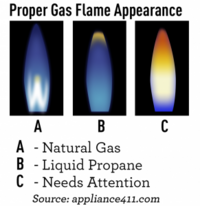 Toxic to humans, carbon monoxide (or CO) is an extremely poisonous gas caused by unsafe gas appliances. Dubbed the ‘Silent Killer’ as it’s colourless, tasteless and odourless, it has claimed the lives of many thousands of people. In fact, it is estimated that around 50 people die each year from CO poisoning whilst around 4000 people experience symptoms, though the true figures could be much higher.
Toxic to humans, carbon monoxide (or CO) is an extremely poisonous gas caused by unsafe gas appliances. Dubbed the ‘Silent Killer’ as it’s colourless, tasteless and odourless, it has claimed the lives of many thousands of people. In fact, it is estimated that around 50 people die each year from CO poisoning whilst around 4000 people experience symptoms, though the true figures could be much higher.
CO is produced when gas does not burn properly or when used in an area that has inadequate ventilation. Poorly maintained gas appliances such as cookers, stoves, boilers are all common causes of CO at home. According to some statistics, 11 CO deaths have been recorded in the workplace so what can you do to stay safe at work?
Occupations
Occupations which have a substantial risk of exposure of carbon monoxide are:
- Fire fighters
- Mechanics
- Construction workers
- Truck drivers
This list is not exhaustive and others that can be affected are those who operate machinery such as pressure washers, generators, gas cooking units and even packing facilities where propane-powered forklifts are used. Additionally, anyone can be at risk of CO poisoning, even in the comfort of their own home.
Risks
Poorly maintained, old and defective appliances as well as insufficient ventilation are the main causes of carbon monoxide poisoning whilst at work. Blocked flues or chimneys, faulty furnaces, heating and inadequate engineering work can also contribute to the exposure of CO.
To minimise the risks of exposure at work, ensure:
- You are aware of the signs and symptoms of CO poisoning. These include nausea, headaches, weakness and poor concentration. Moderate exposure can include behavioural changes, confusion, drowsiness and chest pain. Prolonged exposure to CO can develop after a few weeks and includes memory loss and Parkinson’s-like symptoms. If you feel better away from the workplace then it may be a sign of CO poisoning.
- You have adequate airflow in areas with equipment, machinery and appliances. Keep areas around external flue outlets clear to make sure combustion gases can be removed.
- You have carbon monoxide detectors around the premises which have been regularly tested.
- You or your employer undertake a thorough risk assessment of all relevant equipment.
- You have all new gas equipment supplied and fitted by a Gas Safe registered engineer and ensure proper servicing to existing equipment.
- That masks and protective equipment are provided if all reasonable practice has been performed in order to reduce fumes.
Additionally, workers may have more chance of being exposed to unsafe CO levels if:
- You work in a confined or enclosed space
- You smoke
- You have a pre-existing medical condition such as lung conditions or cardiovascular conditions
- You have not been trained to know the hazards of CO
Exposure
If you or your colleagues experience symptoms or you suspect carbon monoxide exposure, then immediately tell the health and safety representative or manager who is then obliged to carry out an in-depth investigation.
The Health and Safety at Work etc. Act, 1974 outlines the employer’s general duties to ensure the safety, health and welfare of his or her employees so a failure to take this seriously is breaking the law. Carbon monoxide levels can be tested through a blood test and you can sue your employer if they have been found to be negligent.
First Aid
If a poisoning occurs within the work place, follow these simple guidelines:
- Summon a first aider immediately
- If you do not have a first aider, then move the person to fresh air away from the source
- Keep the worker warm and at rest. If they are unconscious, check for injuries before moving them.
- Dial 999 and follow the instructions you are given
Employers have a responsibility to ensure their workers are safe from harm whilst performing their duties, however stay vigilant and be aware of the signs and symptoms. Don’t forget to share this article with your colleagues too – you never know; it may just save a life.